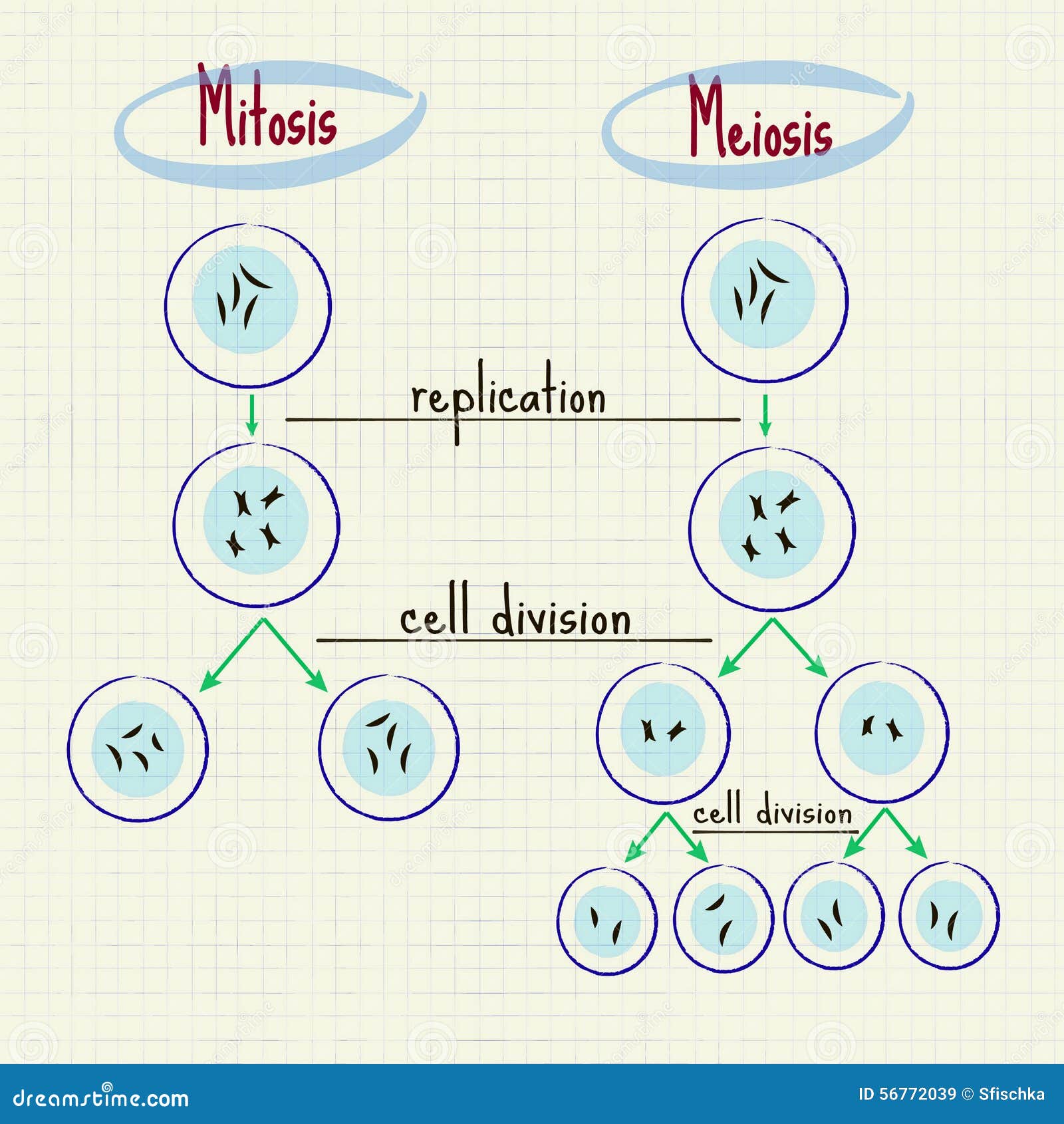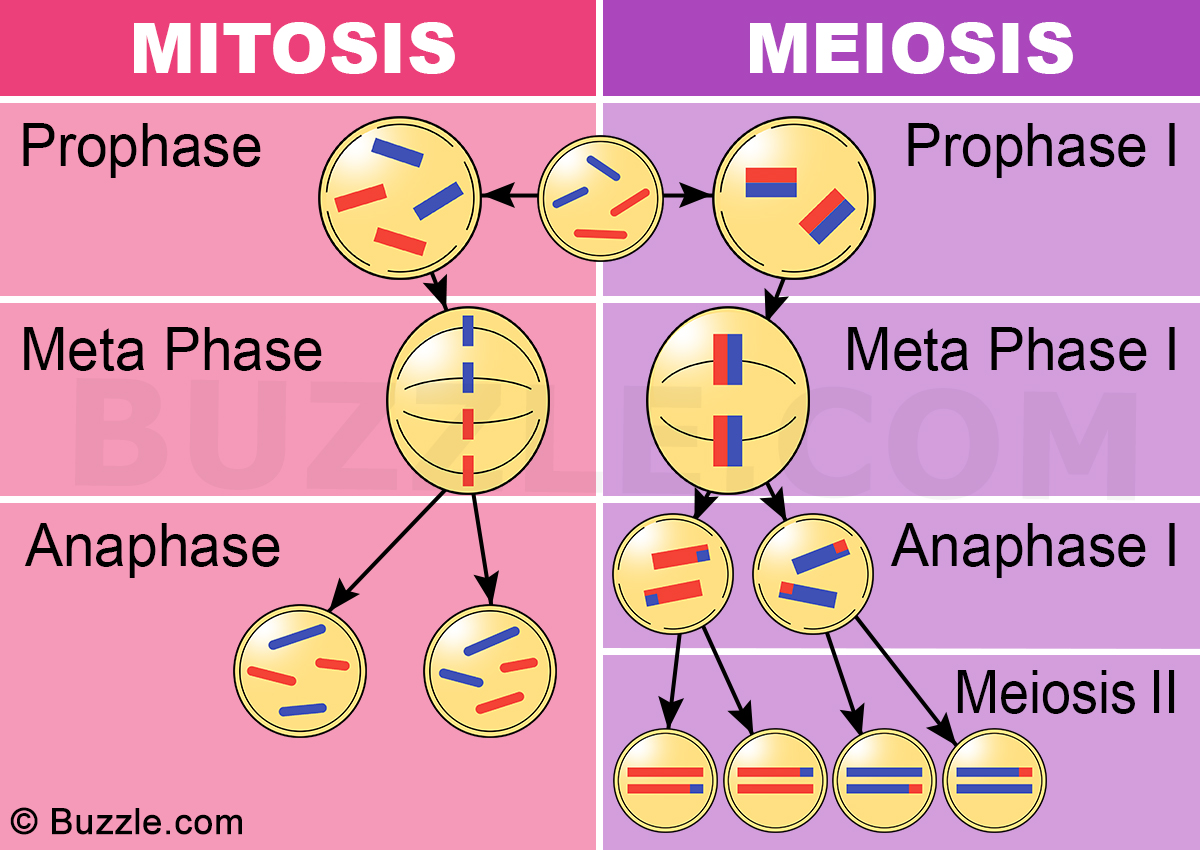
Mitosis And Meiosis
Mitosis is part of the reproduction of every other kind of cell in the body. Mitosis is how we get new skin cells, bone cells, blood cells, and other cells. These are called “somatic cells.” You can tell the difference between mitosis and meiosis by considering the phases that each process includes.
Key difference: Mitosis is the process through which a eukaryotic cell separates the chromosomes in its cell nucleus into two identical sets. Essentially, a cell (the mother cell) divides itself into two cells (the daughter cells), which are identical to the mother cell. Meiosis, on the other hands, is a special type of cell division necessary for sexual reproduction in eukaryotes. In the process of meiosis, a cell that contains two copies of each chromosome, one from the mother and one from the father (the zygote – which is a female egg fertilized by male sperm), produces four cells containing one copy of each chromosome.All cells include a process called cell division in their life cycle. Sacred heart church.
Cell division accounts for approximately 10% of the cell cycle. It is a process by which a parent cell divides into two or more daughter cells. There are three main types of cell division processes: binary fission, mitosis and meiosis.Binary fission takes place in prokaryotes, single-celled organisms that lack a cell nucleus.
Eukaryotes, organisms whose cells contain complex structures within their membranes, experience either mitosis or meiosis. All of these processes are a method of reproduction and DNA replication.Mitosis is the process through which a eukaryotic cell separates the chromosomes in its cell nucleus into two identical sets. These are called the daughter cells. Essentially, a cell (the mother cell) divides itself into two cells (the daughter cells), which are identical to the mother cell. This is done by dividing the nucleus of the original cell into two parts.
These daughter cells contain the same number of chromosomes as the mother cell.Mitosis is a form of asexual reproduction. This allows an organism to clone exact copies of the original cell. This method of reproduction is rapid and effective. However, as the offspring are identical to the mother, there is no mechanism for introducing diversity.Meiosis, on the other hands, is a type of sexual reproduction. It is a special type of cell division necessary for sexual reproduction in eukaryotes.

The cells produced by meiosis are gametes or spores. Gametes are the sperm and egg cells in most organisms, such as all animals and land plants.In the process of meiosis, a cell that contains two copies of each chromosome, one from the mother and one from the father (the zygote – which is a female egg fertilized by male sperm), produces four cells containing one copy of each chromosome. The resulting chromosome is a unique mixture of maternal and paternal DNA. This allows the offspring to be genetically distinct from either parent. Meiosis introduces genetic diversity within the population.Meiosis differs from mitosis in two important aspects. Meiosis produces four offspring cells with half of the original cells’ chromosomes, whereas mitosis produced two offspring cells with identical chromosomes as the original cell.